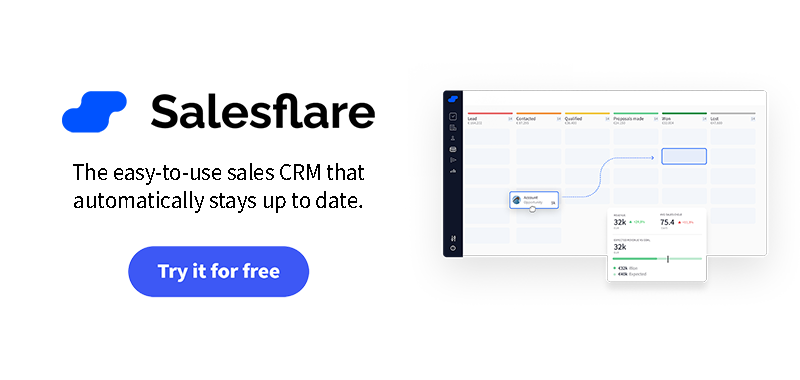The Great Guide to Crafting a Sales Deck that Sells

You know when you send over a sales deck to a prospect and they call back within ten minutes to offer you a huge load of cash? 💰😏
Yeah, me neither. 😑
Sure, it happens some times. If Lady Luck’s at the party 🍀. There’s a lot more to making sales than some fancy slides and you can’t win every game you play.
So no, I won’t be able to tell you how to make a sales deck that will get you a sale every time you send it out.
I also won’t be able to tell you how to get free drinks 🍻 in every bar on the planet 🤷.
What I will tell you is how to make your sales deck so good it will make your prospects’ jaws drop 😮 so hard they’ll be giggling like little girls by the time you drop your call-to-action.

I’ll show you how to sell without selling. How to pitch without pitching. How to play on emotions and how to sell with a story. Storyselling 😎.
You see, a great sales deck is not just about some Powerpoint hustlin’. It’s about knowing your value and bringing it to your prospects in a story that speaks to them.
That story is more than just a sales trick. It’s the dream you want to help your prospects become reality. Your sales deck needs to help them imagine that 😍💭.
Everything you can imagine, is real — Pablo Picasso
Stories stick and stories sell. Build your pitch deck on them and you’re golden.
Now sit back and make yourself comfortable as I enlighten you. 💡
P.S. If you do know how to get free drinks 🍻 in every bar on the planet, please skip this article and let me know in the comments below👇
I’ve included TL;DRs (Too Long; Didn’t Read) at the end of every section so you can get a quick recap before you move on.
The Pitching Paradox ⚾
Behold the traditional sales pitch by company ABC.
We are the raddest company of all time.
We are everywhere. Like God.
Our products will make you $#*! money.
We are changing the world AND building the future.
We won a $#*!load of awards.
All of our clients are in love with us.
Now, behold the traditional reaction by company XYZ.
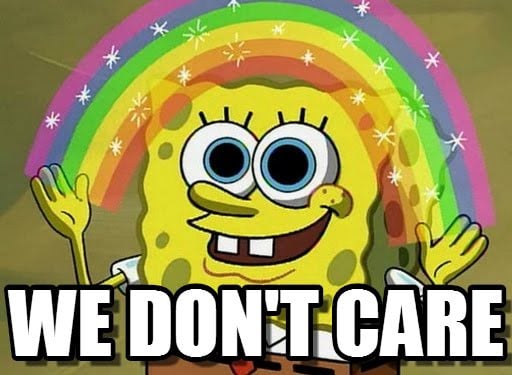
And why would they?
Companies care about their own story, not yours.
Hold that thought and think about the word pitch for a minute.
What does the word pitch say to you, really? This maybe👇?

Hell yes. That looks exactly like throwing some random facts and features at the face of your prospect.
SPOILER ALERT: this is how it ends.

Forget the sales pitch.
People who are pitched at either swing to bat it away 🏏 or duck 🦆 to avoid it. That‘s not going to help you close the deal.
Your prospect doesn’t care about your name, your happy customers, your headquarters and your big pile of awards. They care about themselves and they care about what you can do for them.
That is why, if anyone ever asks you to sell them a pen — you should respond by asking a question of your own.
👉What do you do?
To help a prospect, you first need to know them inside-out. It takes two to close a deal. Selling is not randomly throwing $#*! to see what sticks 💩. It’s trying to convince your prospect to join your team and win together 🏆.
Ask questions, listen and learn. Only then you’ll know what it takes to convince your prospect to join your team.
Wasn’t this supposed to be about sales decks? 🤔
Solid pitching advice that is. But what does all of that mean for your sales deck? It’s not like you can start off your presentation by asking questions and then just change your whole sales deck on the spot.
It means you need to do your homework 🤓!
Getting to know your prospect and figuring out how you can provide value to them is what you do before you put together your sales deck.
These will be the key ingredients for cooking up your story. The Grand Story of how you and your prospect find each other, fall madly in love 💏 and live happily ever after 💍.
A match made in heaven.
TL;DR
- forget the sales pitch
- instead of throwing facts and features
- find out what kind of value you can give your prospects
- prospects don’t care about you, they care about themselves
- do your homework
Why you need to tell a story 📖
💭 The year was 1748.
John Montagu was a big shot of the British aristocracy, carrying the fancy title of 4th Earl of Sandwich.
Whenever John wasn’t dealing with important political issues, he very much liked to play the occasional hand of cards 🃏. He also greatly enjoyed eating while playing, especially some nice beef 🐄. This was a big problem as his hands would be all greasy, ruining both the cards and his game.
So he came up with the idea to put the slices of beef between two sides of toasted bread.
Finally he could play cards and eat at the same time.
And thus the sandwich was born.
The world is forever in debt with John Montagu 🙏.

I bet you’ll never forget this story.
Why? Because you’re wired that way.
We think in stories all day. Whether it’s about work, doing groceries or our family at home — we make up stories in our heads for every action and conversation. It’s how we think.
That’s not what I say. It’s what science says 👨🔬
Research shows our brains are not hard-wired to understand logic or retain facts for very long. Our brains are wired to understand and retain stories. A story is a journey that moves the listener, and when the listener goes on that journey they feel different. The result is persuasion and sometimes action.
💬Jennifer Aaker — Stanford’s Graduate School of Business
Stories stick. Facts don’t.
Stories are the most powerful way to activate a human brain and thus the best way to engage an audience. That’s why in history class you always get the events right and the dates wrong. Great stories vs. boring facts.
And yet, a lot of marketing is build on facts.
Buy this, it will do this, and then that.
That doesn’t stick. People will forget. And so will you.
If you want your message to stick, you need to give them more than just facts and numbers. Give them engaging conflict, vivid imagery, memorable metaphors, and striking twists. You need to give them a story.
TL;DR
- stories stick
- why? science baby
- we owe John Montagu
Start with why ☝️
A wise man once said:
People don’t buy WHAT you do, they buy WHY you do it
That man was Simon Sinek and he said it in the third most watched TED-talk of all time.
In this talk, Simon introduces the Golden Circle. Here’s the gist of it.
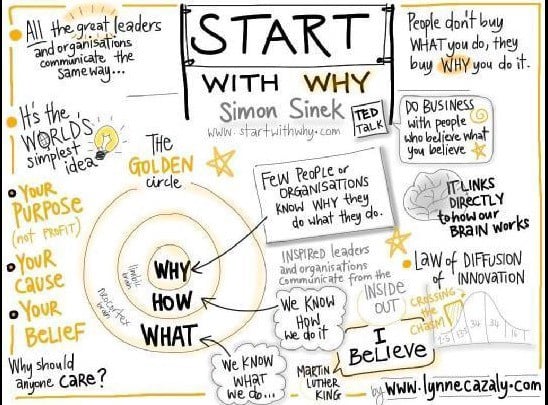
The Golden Circle is what Apple, Martin Luther King and the Wright brothers (the flying ones) have in common. It’s how they lead and inspire by and through communication.
You see, we humans talk a lot about what we do. Then we work our way down to the how and ultimately, if we get there, the why.
The thing is that the what doesn’t really do that much for us. Not because we think it’s boring or something. Again, it’s just our brain that doesn’t really care 🙄.
Whats are really just facts. Facts only speak to the language processing parts in the brain — the part where we decode words into meaning. That’s it. Nothing else happens.
Whys on the other hand are quite the attention whores. Like stories, they trigger the part of the brain that sparks emotions.
There’s more. Research has found that brains of story tellers and listeners can synchronise as the story unfolds. This means you can actually induce thoughts, ideas and emotions into someone’s mind, just by telling a story.
Crazy right?😝
Someone should have told Leonardo Di Caprio that before he went on making people dream within the dreams they had in their dreams. If he would have just told them some story we wouldn’t have to wonder for the rest of our lives if that friggin’ spinner will drop or not.
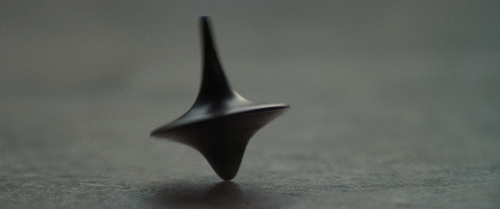
If you have no clue what I’m woofing about — go watch Inception.
You can thank me later.
Building up your sales story from the why rather than the what and how gives your message powerful emotional hooks that will stick in the mind of your audience. Positive emotions like these have been shown to increase long-term conversions and customer lifetime value.
And, once you hook them, you just have to reel them in. 🎣😏
Wrapping up 🎁
Forget the traditional sales pitch. People don’t like to be bombarded with a bunch of facts. They don’t care about you, they care about themselves.
What can you do for them?
Forget about your products, your funding, your awards, your clients or how awesome you think you are. Find your why, the difference you want to make for your clients, and use it to build a compelling story that sticks.f
Your prospects are the heroes of the story, not you.
Time for a little break now 🎉. You earned it.
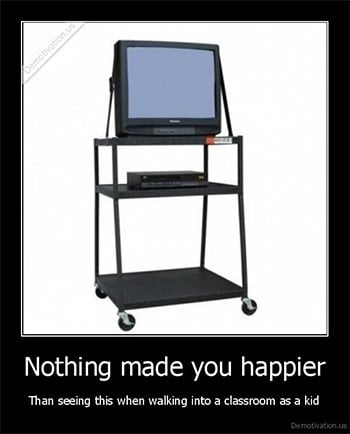
TV-time! 👶
According to Google, this Apple commercial is the greatest of all time.
👀There’s a story here.
We first see a free woman in a free society. Then Big Brother (the big bad man on the screen) comes along and forces everyone to conform. 1984-style.
The woman is the only one to resist. With the entire culture in submission to Big Brother, she takes one last action. She launches the hammer through the screen and destroys Big Brother. In front of everyone else to see.
The screen explodes 💥 The woman and her society are free again, once and for all.
The moral of the story ☝️ we need to act to overcome conformity and suppression.
Apple’s marketing message: The Macintosh 🖥️ will set you free from the conformity and suppression of the other boring PC makers.
Et voilà
👉 Apple’s WHY.
Apple challenges the status-quo. They’re about thinking differently.
Dell, just to name one, makes computers for home and business use. Period.
With Dell, you buy a computer. Apple does more, it inspires 💡.
You know what to do 👊
Find your why and use it to build a story that sticks.
Not just for your sales deck.
This story embodies your mission as a company. It’s your raison d’être and the foundation to all your marketing.
TL;DR
- people don’t buy what you do, they buy why you do it
- ‘whys’ speak to our emotions, other than ‘whats’ and ‘hows’
- you can use it to plant ideas into someone’s head
- learn from the ‘greatest commercial of all time’
The Fairy Tale Way ✨
Stories work. I think we’re clear on that.
You don’t have to be a natural at storytelling to tell a good story.
All it takes is some basic knowledge of what elements make up a compelling story.
One company that totally nailed the sales narrative is Zuora. Their sales deck has been hailed as the greatest sales deck of all time.
They did this by building on classical fairy tale ingredients to create a engaging story that sticks and sells. It’s really great stuff, so there will be a lot of their story in the elements I’ll be introducing from here on.
Hold on tight, you’re in for a magical journey 😈
#1 Start with a Bang 💥
Remember, nobody cares about you.
If you start off blabbing about your company and product, you’ll lose before you even got started.
🏈 Kick off by creating a huge sense of urgency for your audience.
Name a big shift in the world 🌍 A change that comes with high stakes for your prospect and makes them question the position of their business within it.
Most pitch advice tells you to start with the problem but this will put your audience on the defensive and that’s not what you want.
The problem with starting with the problem is that prospects may have difficulties acknowledging that they indeed have the problem. Instead, create a setting that cannot be questioned. This will have your prospect open up instead of closing down.
It has to be undeniable like the evil Empire building the Death Star as a weapon of mass destruction in Star Wars and Sauron re-awakening the darkness in Lord Of The Rings. Both Luke Skywalker and Frodo had no choice but to take action. You want your sales deck to have the same effect on your prospect
Your prospect is the Chosen One 🌟 The Luke Skywalker that will save the galaxy from Darth Vader. The Frodo that will destroy Sauron’s Ring. The Harry Potter that will defeat Voldemort.
Your sales deck needs to make it clear that $#*! is about to go down and that it is time for your hero-prospect to kick some serious ass 💪.

Zuora does this by introducing prospects to the subscription economy — an undeniable trend that sees buyers choosing recurring service payments over one-time purchases.
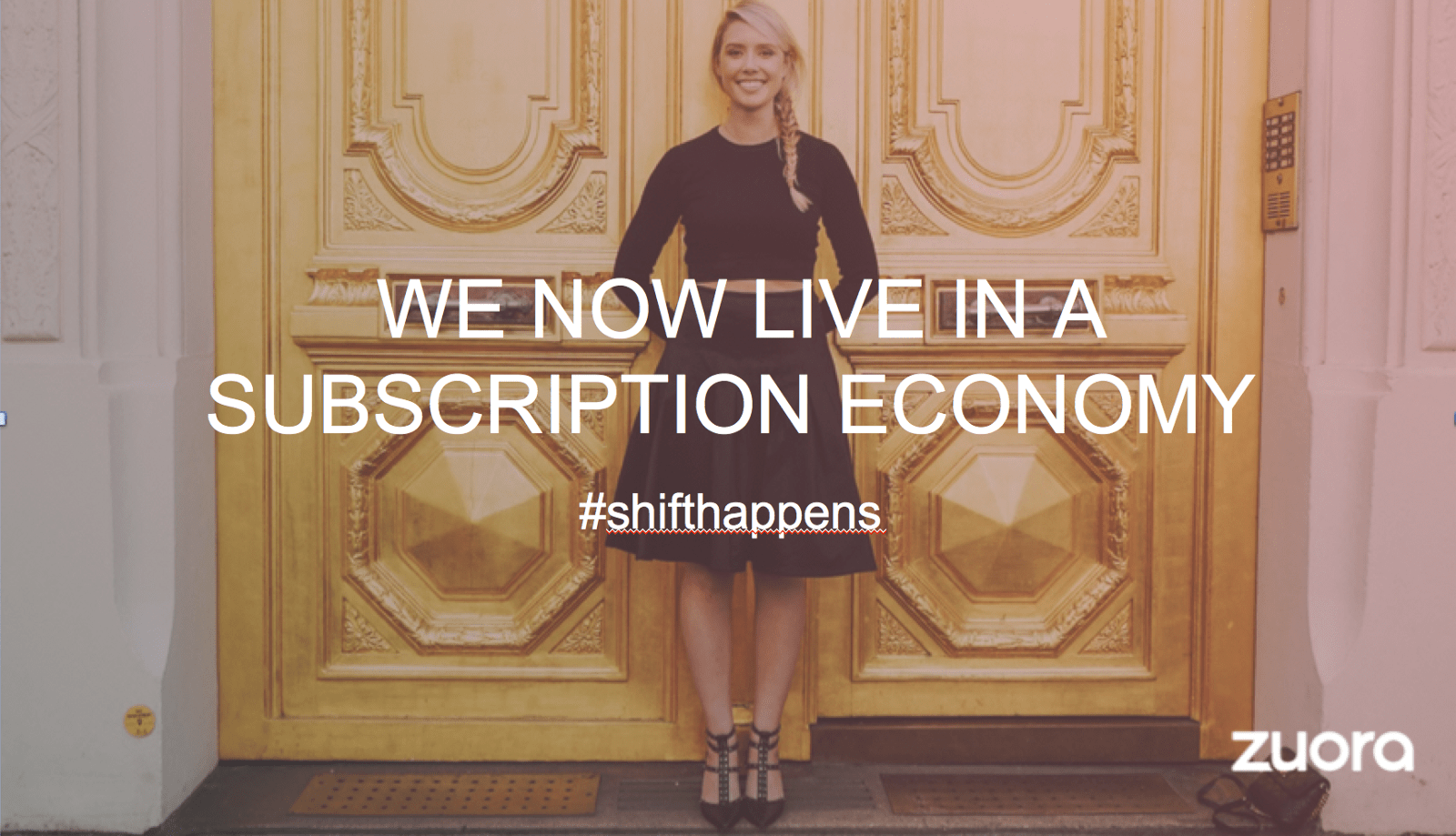
By the way, this right here is your WHY — your reason of existence.
Salesflare is about the value of data and how it can reshape customer relationships in a big way. Companies that double down on data can make customers infinitely happy and drill dollars like there’s no end to it… And in the case of data, it’s not like oil: there’s actually no end to it.

The question is not if data is there to stay.
The question is if you’re ready for it.

Companies that embrace technology and data in their sales and marketing will have an edge over the ones that don’t.
😯
Do you feel the urgency already? 😏
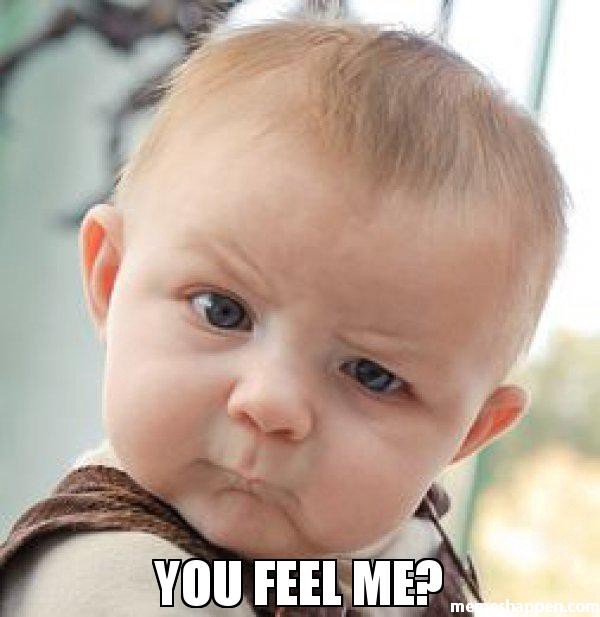
#2 Make it clear there’ll be Winners 🏆 & Losers 😢
Prospects suffer from loss aversion — they’ll rather prevent losing by sticking to the status-quo than trying to win by going for change.
Show your prospect that the big change is a huge opportunity to win big or lose bad.
To tackle this, you’ll have to show that going with the change is necessary to avoid losing.
You’re painting a black — and — white picture:
- go with the change and be a winner ⚪ bright future ahead
- ignore the change and be a loser ⚫ dark future ahead
Again we can learn from Zuora. They first show the mass extinction caused by the big dramatic shift 💀

To then move on to the winners 💪

Winners go with the Zuora way, losers stay behind. Clear as vodka 🍸.
You can add some extra salt to the wound by pointing out problems of rival solutions 👉They’ll make you a loser.
For example, CrazyEgg is pushing right where it hurts 🤕:
Analytics tools will not tell you why your visitors aren’t buying, subscribing, calling… This is where most businesses get stuck and stay stuck.
In Salesflare’s story, you either choose to:
- Join yesterday’s companies and die a slow, painful death 🔢 Nay
- Thrive as a data driven, digital company 👫 Yay

Sales people have the choice to enrich and interweave their human relations with data or not.
Would you rather become a superhero or slowly turn into a fossil? 🗿

#3 Tease the Land of Milk 🥛 and Honey 🍯
By now you probably feel tempted to throw all your aces on the table and tell them all about how great your product is.
Dial it back for a minute ☎️ You don’t want to jump the gun here.

The momentum is all yours but you’re going to want to thread lightly here.
Don’t sell the skin before you’ve shot the bear. 🐻
Slow and subtle wins the race 🐢.
If you go all-in too quickly, your prospect will lose interest and tune out. You need to grease ‘m up just a teeny bit more 💆 before you go in for the kill 🗡️.
Hold up a vision of the happily-ever-after future 🌺 that you can help them achieve. A place where dreams come true 💭.
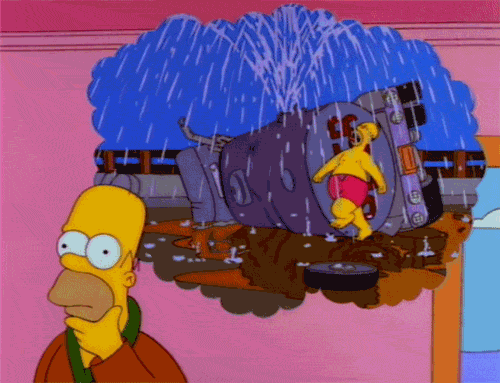
This Land of Milk 🐮 and Honey 🐝 should be desirable, yet difficult to reach. That’s where you come in. It’s your raison d’être, your why 👉 to help your prospect get to walhalla 🙌.
💭 This dream world is not your product. It’s how life will be like thanks to your product. Your technology as a magical enabler of the good life.
Here’s how Zuora imagines the good life for the winners of the subscription economy.
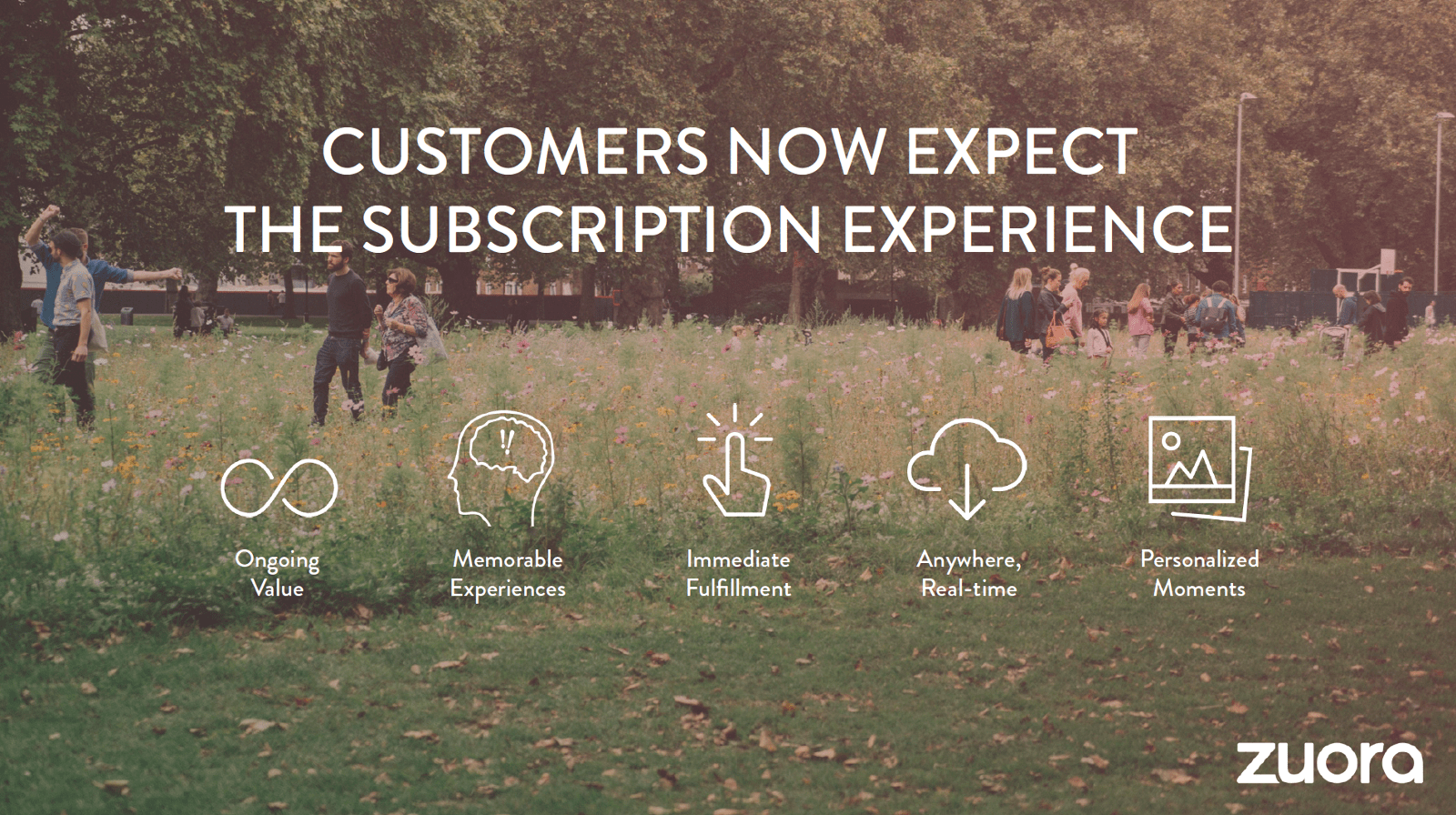
Make it simple and easy to imagine. Apple is the master here.
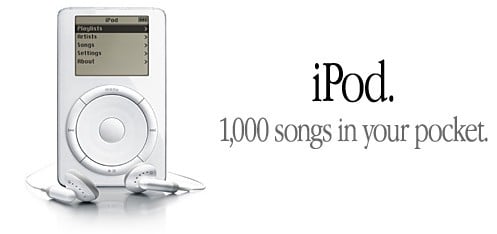
Salesflare’s Land of Milk and Honey sees sales people in full control of their customer relations, thanks to powerful data collected and organised by robots.

Imagine having a brain that knows and remembers the smallest details about your customers. Without you having to lift a finger. Data-driven super relations with your customers.

#4 Show off Features as Superpowers ✨
Now it’s time to show your colours 🎨 as the prospect’s sidekick.
You’re the prospect’s Obi-Wan Kenobi, Gandalf and Albus Dumbledore. You are giving him the superpowers the overcome the obstacles that lay between them and the Land of Milk and Honey.
These superpowers come in the form of a game-changer, some kind of magical tool that sets the chosen one apart from the rest.
It’s like Obi-Wan giving Luke his lightsaber to defeat the Empire, Gandalf protecting Frodo with wizardry on his way to Mordor and Dumbledore teaching Harry how to defeat Voldemort.
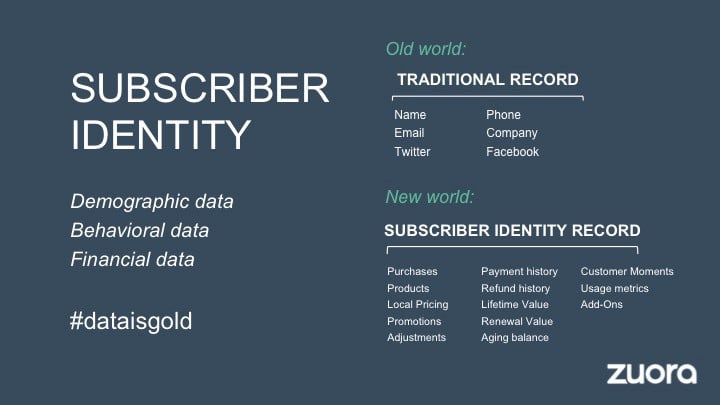
This slide from the Zuora sales deck looks kind of boring at first, but notice how traditional and new solutions are positioned as old world versus new world.
The prospect has just been dazzled with the Land of Milk and Honey but is now confronted by how difficult it is to get there with traditional solutions.
Zuora’s way alters the playing field. It’s the game-changer the hero needs.
As inspired as we were by Zuora’s slide, we created our own.

By 2020, 1,7 megabytes of new information will be created every second. For every human being on the planet.
Manually taking care of that data means sales people would be glued to screens until the end of times 💀.
We want to give sales people a robot that takes that mindless work out of their hands 🤖 .
So sales people can focus on the real art of customer relations. And make sales more human again.
Voilà superpower.

#5 Show you can make the story come true 🐲
By now the narrative is pretty clear: if they go with you, you’ll take them to the Land of Milk and Honey.
Ok, fair enough.
The thing about Lands of Milk and Honey is that they’re not exactly easy to get to. The path that leads to it is littered with obstacles and traps. Your prospect is therefore likely to be skeptical about the likelihood of your little fairy tale actually becoming reality.
Is this too good to be true? 🙃

People are not afraid of spending money. What they are afraid of is being cheated.
Unearth those fears. Show you’re real and genuine.
This is why the last part of your pitch should be about presenting evidence that showcases your ability to take your prospect to the stars.
The best way to do this is by showing you did it before. A success story about how you helped similar prospects to reach the Land of Milk and Honey.

What if you’re still short on customer success stories?
The next best thing is product demos. Just make sure you showcase your features in a way that help your prospect reach the Land of Milk and Honey.
!! All Aboard the Story Train 🚂
This stuff only works if your whole marketing is aligned around this magical Fairy Tale. Make it your whole company while you’re at it.
You’ll rarely make a sale out of just one sales presentation. Coherence is key to convey thought leadership, authenticity and trust. Every single member of your organisation has to be onboard with your narrative.
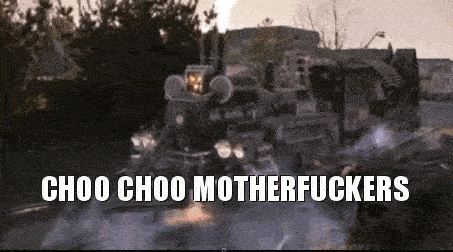
This is not new. This is Marketing 101, but companies still tend to forget this.
It’s not hard either. As pointed out before: stories are easy to remember. They make everything more fun and appeal to people’s imagination. That’s why we started telling them 40,000 years ago in the first place.
TL;DR
- build up your story like a fairy tale
- #1 start with a bang
- #2 make it clear there’ll be winners & losers
- #3 tease the land of milk and honey
- #4 show off features as superpowers
- #5 show you can make the story come true
- align your whole marketing around your magical fairy tale
Painting the Picture 🖌️
There’s a reason why slide design comes after the story.
👉 Slides are the last thing you should think about.
If you can’t tell a story that sticks without slides, your story sucks.

Slides are meant to provide a visually supporting experience to the story you’re telling. Not as presenter notes.
Think of your slides as visual cues that help your prospect imagine the Land of Milk and Honey. Your sales deck should be what makes your story sing.
#1 Consistency is key 🗝️
Make sure each sales deck feels like a part of the same story.
Use the same kind of imagery, fonts and wording across all your slides.
#2 Less is more 🔲
Slides with a lot of text can be lethal to the story you’re trying to tell. You want your slides to support your story, not replace it.
It’s hard to tell a story when you’re asking your audience to split its attention between listening to you and reading the slides.

Don’t do that to them. It will kill the magic of your story.
Use images and infographics instead of long paragraphs and confusing numbers.
Only put words that carry a powerful meaning. Your rule: if a word doesn’t say anything by itself, it shouldn’t be on your slide.
#3 Think Topic Transitions 🚣🏻
Consistency is key but you don’t want every slide to look exactly the same.
Consider adding subtle variations throughout your sales deck as you move on to a new topic. These will work as visual cues on your audience’s attention.
One way to do this is by alternating from light backgrounds with dark text to dark backgrounds with light text. Your slides will look different while still belonging to the same family.
#4 Have Photos do the Talking 🖼️
Pictures say more than words.
Pimp your slides with punchy pictures that resonate with the image you’re trying to get into your audience’s head.
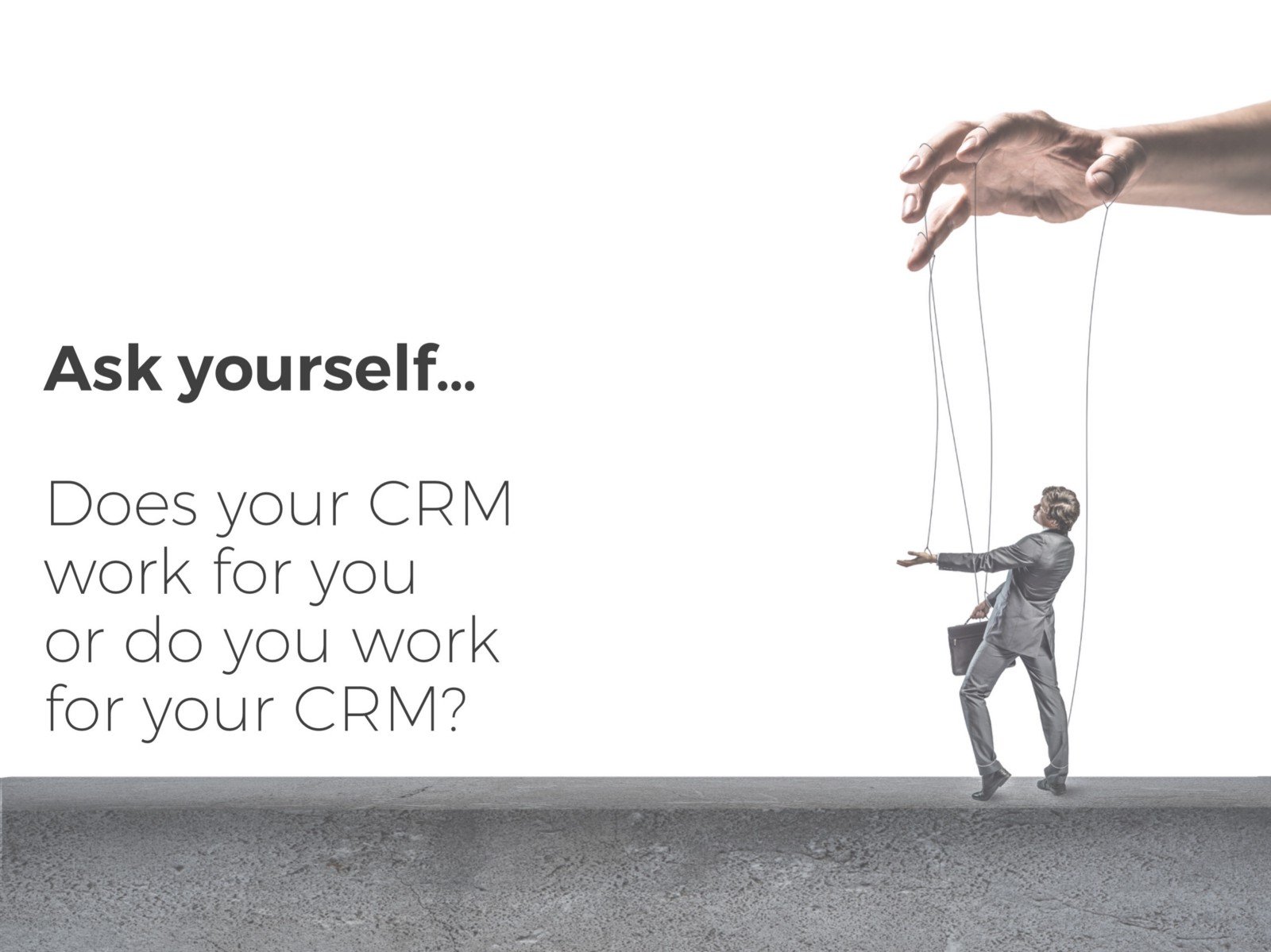
Use photos that speak to the story you’re telling, without being too complex.
They should enhance meaning and be voilà. You don’t want your audience to rack their brains over some cryptic picture while you’re up there trying to get full attention.
#5 Go easy on animation and effects 🤹
Both Powerpoint and Keynote will try to trick you into using a $#*!load of effects and animations.
Resist that urge.
Props on having a car cruise across your slide, really, but it makes your sales deck look like it was made by an infant. Not too mention they’ll take away focus from your core story. In most cases.
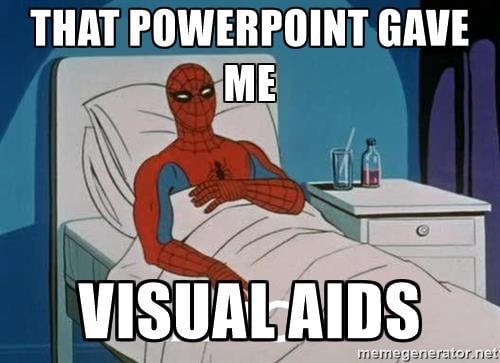
I have seen great sales decks with animations. If you must, go for subtle and functional. Less is more and consistency is key.
TL;DR
- slides are the last thing you should think about
- #1 consistency is key
- #2 less is more
- #3 think topic transitions
- #4 have photos do the talking
- #5 go easy on animation and effects
Some Killer Resources to finish it off 🗡️
#1 Canva 💯
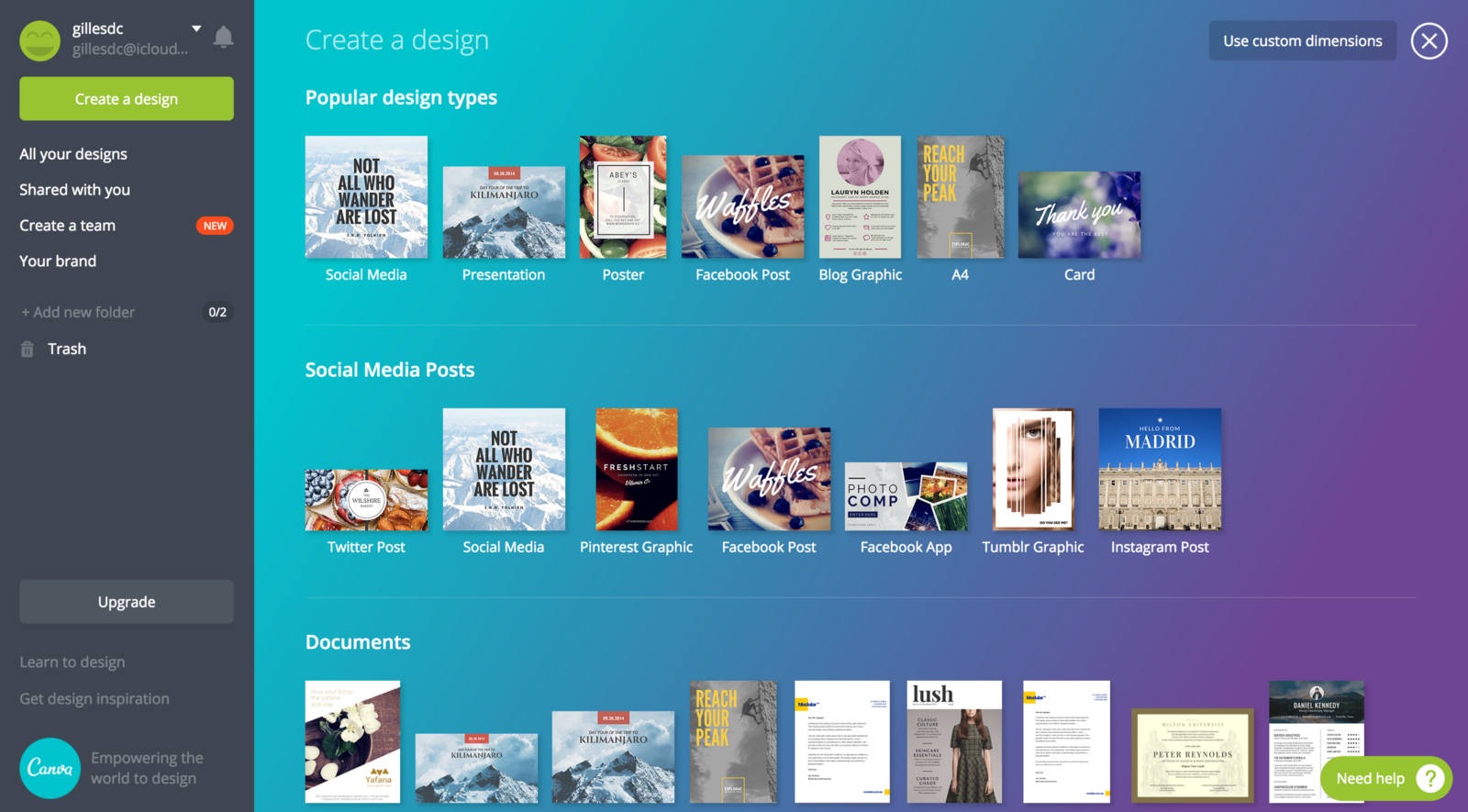
If you feel rather unsure about your skills to design visually appealing slides 👉 cry no more. Your darks days are over.
Canva is a free online design tool that gives you the power to create practically anything — social media graphics, banners, invitations, infographics, flyers, business cards — by just dragging and dropping.
#2 Ready-made templates 🍭
I started out with slide design playing with ready-made templates. It’s a great way to get the hang of it and figure out a style of your own.
Sometimes it’s just easier to start from something that is already great and then fine-tune it to match your own ideas and identity.
Here’s a list of online marketplaces where you can get yourself some beautifully designed templates you can easily customise as you like.
#3 Book recommendations 📚
There’s only so much you can say in a blog post 😌.
Here’s a few books in case you’re hungry for more 😋.
Made To Stick — Chip & Dan Heath
The art of making ideas unforgettable.
The point I made about stories being essential to making stories stick was taken from this great book.
Solidly researched and just fun to read. A book every marketeer should have on their shelves.
Carmine Gallo — Talk Like Ted
TED Talks have redefined the meaning of a successful presentation and have become a gold standard for public speaking.
Communications expert Carmine Gallo breaks down the top TED Talks to distill the 9 key elements to a successful presentation.
While you’re at it, also check out his other book on the Presentation Secrets of Steve Jobs.
Both books are golden if you‘re looking to kill it in front of an audience.
Nancy Duarte — Slide:ology
The bible to slide design.
Let’s say Ms. Duarte goes a little deeper than the 5 little hints I just gave you. Slide:ology will change your traditional approach to designing slides while teaching you how to become a visual thinker.
TL;DR
- Canva gives you the power to create anything
- ready-made templates can be a great way to start designing slides
- read books
I’m out 👋
I did my part. It’s up to you now.
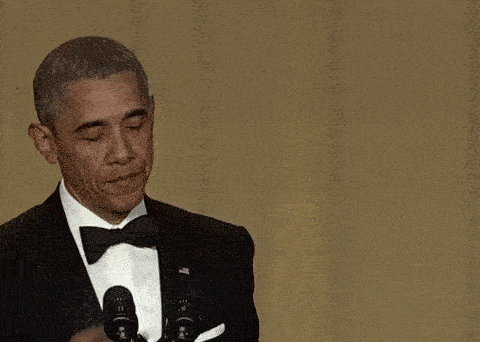
This is you after your next sales presentation 👊
If you’re looking for a second opinion on your sales deck (or anything else that is cool), feel free to hit me up on Twitter @gillesdc — I love to chat.
Last updated:
- The 20 Best Sales Books Elon Musk Is Probably Reading - February 14, 2023
- 6 foolproof ways to get your startup its first 100 customers - December 6, 2022
- How To Build A Sales Funnel That Sells - September 2, 2021
